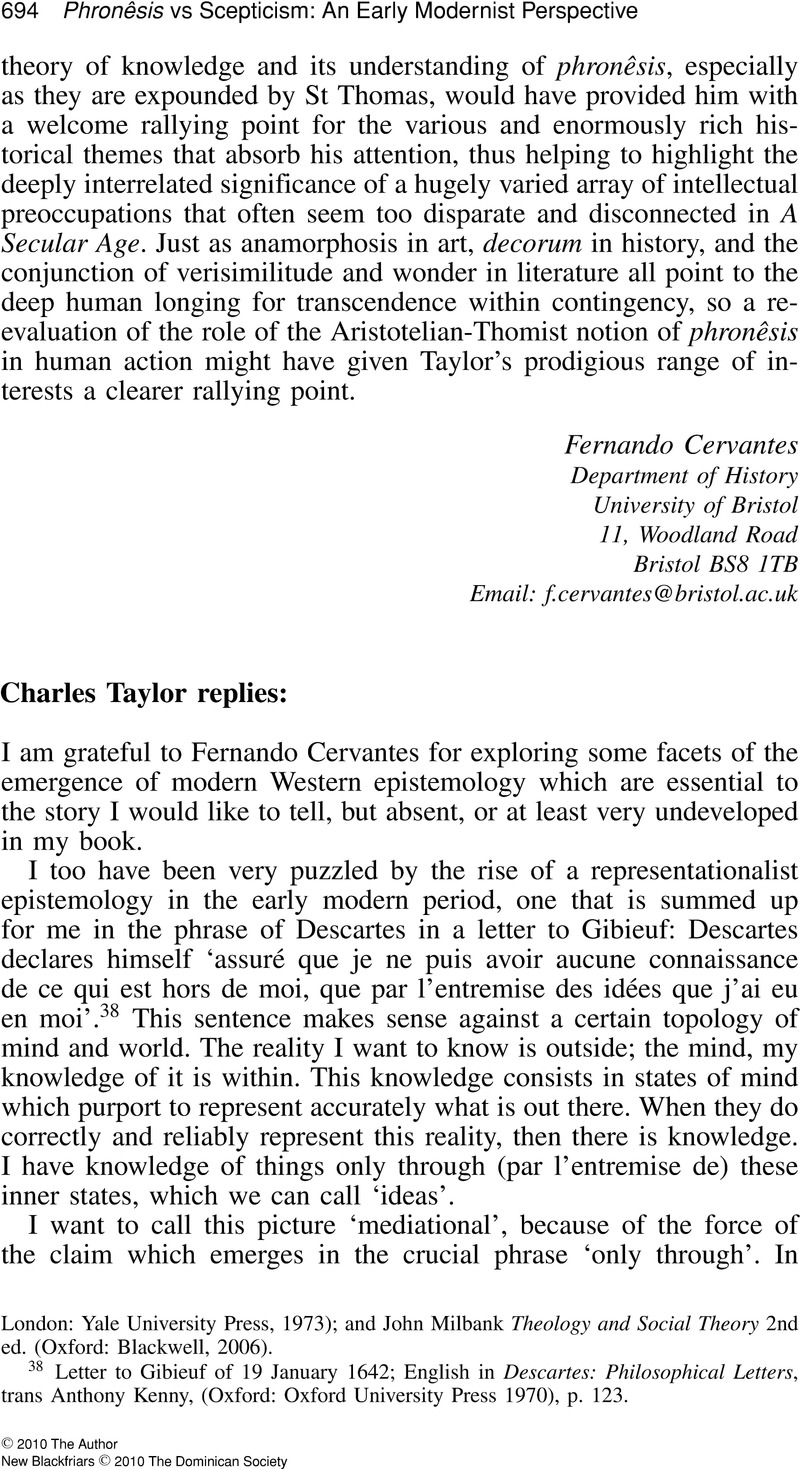Article contents
Charles Taylor replies:
Published online by Cambridge University Press: 01 January 2024
Abstract

- Type
- Symposium on Charles Taylor with his responses
- Information
- Copyright
- Copyright © 2010 The Author. New Blackfriars © 2010 The Dominican Society
References
38 Letter to Gibieuf of 19 January 1642; English in Descartes: Philosophical Letters, trans Kenny, Anthony, (Oxford: Oxford University Press 1970), p. 123Google Scholar.
39 The actual text of para 115 reads: Ein Bild hielt uns gefangen. Und heraus konnten wir nicht, denn es lag in unsrer Sprache, und sie schien es uns unerbittlich zu wiederholen. In my discussion, I argue more that the picture in anchored in our whole way of thinking, our way of objectifying the world, and thus our way of life, and therefore also in our language.
40 Plato, The Republic, 518C-D; Plato speaks here of a ‘conversion’, a ‘turning around’ (periagôgê).
41 ‘to d’ auto estin hê kat’ energeian epistêmê tôi pragmati’, de Anima, Book III, 430a20; and again at 431a1.
42 Later Aristotle says that ‘knowledge is the knowable and sensation is the sensible’. This doesn't mean that the sensible and cognitive faculties are identical with the object as a material entity; ‘for the stone doesn't exist in the soul, but only the form of a stone’(431b22, 432a1). It is in the eidos that the mind and object come together.
- 2
- Cited by




